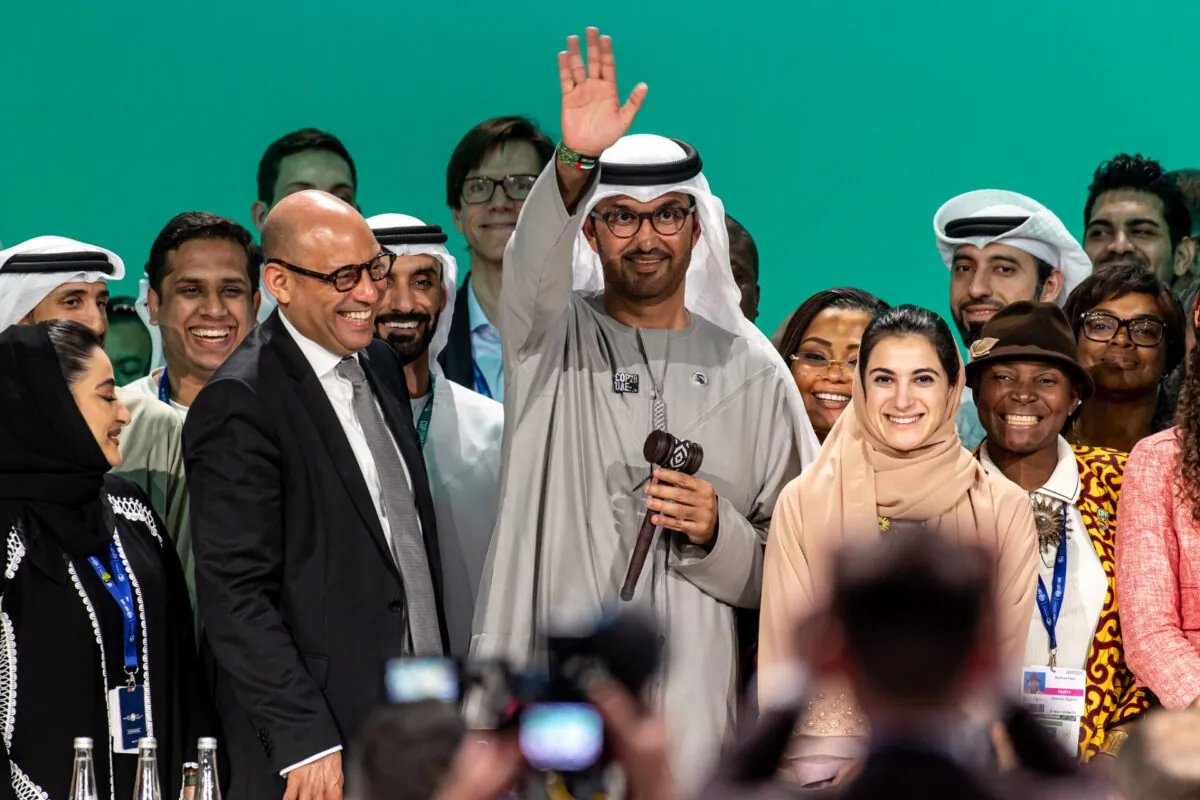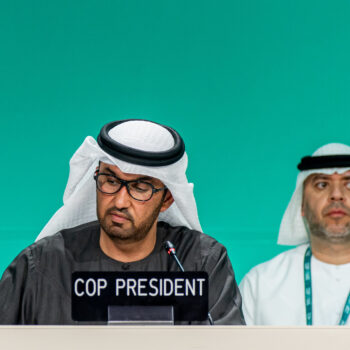COP28 seemed set up for outlandish contradictions. The critical question of whether to agree to a rapid phase out of fossil fuels was to be overseen by an oil company boss. Governments were asked to set up a fund to help poor and vulnerable communities deal with climate disasters in a luxury manufactured oasis in the desert.
Yet the central thread through the COP28 negotiations, the Global Stocktake, saw governments agree to a historic shift in pace for global climate action. The negotiations were framed by a global stocktake report that showed only one in six countries has a national climate adaptation plan and rather than being on track for a 43% cut by 2030, emissions are still rising.
The COP28 decisions haven’t solved the climate crisis – no single multilateral process could do so. But countries have taken a decisive step to transition away from fossil fuels, deliver on global targets on adaptation, and start to scale up finance for climate action.
These major outcomes are questioning many long-held assumptions, myths and stereotypes about climate diplomacy.
“Nothing’s agreed until everything’s agreed”. The historic Day 1 decision on operationalising the Loss and Damage Fund renewed faith in multilateral cooperation on this global challenge. Typically in the UN climate process, no single element is agreed upon until the whole package is finalised. But serious effort from the co-chairs of a ‘transitional committee’ of 24 countries prepared the world for agreement on the set up of the loss and damage fund at the opening plenary meeting. By pledging $100 million each to plenish the fund, Germany and the UAE sparked a surprise bidding war for contributions totalling almost $700 million. The US’ bizarre $17.5 million pledge will go down as the most underwhelming climate finance pledge in history, but showed just how much of a political shift has been achieved in three years from a country unwilling to even use the words loss and damage.
“The fossil fuel interests always win”. A fierce diplomatic battle between OPEC and small island champions of climate ambition saw the underdogs triumph. The High Ambition Coalition (HAC) led by the tiny Republic of the Marshall Islands and bolstered by Denmark, Spain, and Colombia, rallied around 127 countries – including previously sceptical oil and gas and coal exporters the UK, USA, Canada and Australia – behind an overwhelming call to transition away from fossil fuels, triple renewable energy and double energy efficiency. The HAC was formed originally to secure the historic Paris Agreement, but disagreements over establishing a Loss and Damage Fund have challenged the group’s unity and impact over the last few years. Having the HAC back is going to be critical to ensuring the signals landed in COP28 are actually delivered.
“There’s no finance for higher ambition”. Reports and initiatives launched at COP28 have estimated eye-watering numbers of dollars needed for the transition (and even larger costs for inaction). $5-7 trillion per year globally, $2.4 trillion per year in developing countries of which $1 trillion a year is needed from external finance sources. COP28 showed that there are viable pathways to unlock this scale of finance. It built on outcomes from COP27 and made clear calls on wider actors to mobilise finance for the transition ahead, including reforming the multilateral financial architecture and implementing the new World Bank vision. These are key parts of the puzzle to unlock the trillions – but recognising this in the UNFCCC shows there is a pathway for finance ahead.
“Mitigation matters most”. For years, adaptation has been neglected, with the Global Goal on Adaptation looming over the Paris Agreement as an unknown and unquantifiable aspiration. The issue has always been a top priority for developing countries, yet generally seen as a sideshow compared to mitigation for developed countries. However in Dubai adaptation was a major deal maker of the final package. Developed countries spoke more about adaptation than in previous years and they are finally waking up to the urgency of this issue. The final GGA outcome is far from perfect and there is now a two-year process to work out indicators to measure the agreed targets. That may in turn help catalyse action on the ground and help close the vast adaptation finance gap beyond merely delivering the promise of doubling adaptation finance. In short, it seems that for the developed countries adaptation will have to be top of the to-do list in 2024, starting with developing a new report on the doubling as agreed at COP28, and building on progress from the coalition of ambition on adaptation finance that has been developed through the Climate and Development Ministerial.
“The UN is all talk and no action”. Long dismissed as pointless, a majority of the significant outcomes from COP28 negotiated decisions are agreements to set up dialogues. That includes continuing the Sharm El Sheikh dialogue on Article 2.1c, a new dialogue on implementing the outcomes of the Global Stocktake, a new UAE-Belem Global Goal on Adaptation work programme and an adaptation finance Ministerial, as well as the new just transition work programme and a new annual dialogue on how GST outcomes inform new NDCs. While there’s certainly a risk of overloading the system with work programmes, workshops and processes, it also shows the vital role that continued discussion plays in bringing together a balanced and ambitious package. Many of the side deals Al Jaber hailed at the closing plenary were also setting up processes, especially the UAE Global Finance Framework bringing together the drivers of the finance system transformation agenda. It is these sorts of dialogues that will help pave the way for more finance and more action. To be impactful, however, they need to be shaped with significant political investment. The bitter negotiations over the mitigation work programme should serve as a cautionary tale of what happens when climate politics is mishandled in otherwise well-intended dialogues.
The task for climate diplomats now is to proceed along the “Roadmap to Mission 1.5” from Dubai to Baku and then Belem at COP30 in 2025. This must answer the questions left under-addressed: financing the transition, securing the economic and development opportunity from the transition for developing countries, and measuring and accelerating adaptation. The next steps are clear. Finance reform is the order of the day at the Spring Meetings in early 2024. We must soon see a group of first-mover champions come out early with new NDCs for 2035 and shifts in nearer and longer-term ambition. The announcement by the US and China in the closing plenary of their plans to review their respective LTSs could be significant. Italy and Brazil have key roles to play in the G7 and G20 next year. These strands of work in 2024 will be essential to breathe life into the outcomes from Dubai.


